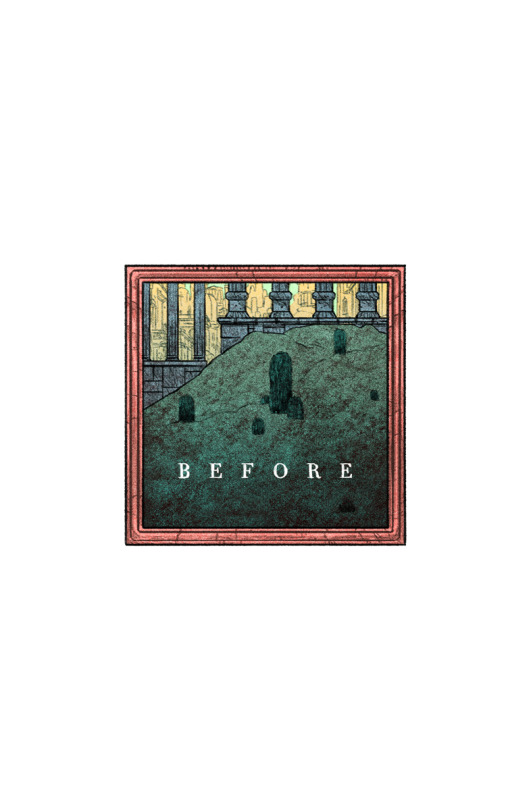Animalistic Robots, By The Very Creative Robert Chew.





Animalistic Robots, by the very creative Robert Chew.
More Posts from Etreageometrievariable and Others








Ben Affleck speaks about Islamophobia X




*frantically takes notes*
I always find it kind of weird that matriarchal cultures in fiction are always “women fight and hunt, men stay home and care for the babies” because world-building-wise, it makes no sense
think about it. like, assuming that gender even works the same in this fantasy culture as it does in ours, with gender conflated with sex (because let’s be real, all of these stories assume that), men wouldn’t be the ones to make the babies, so why would they be the ones to care for the babies? why is fighting and hunting necessary for leadership?
writing a matriarchy this way is just lazy, because you’re just taking the patriarchy and just swapping the people in it, rather than actually swapping the culture. especially when there are so many other cool things you could explore. like, what if it’s not a swap of roles but of what society deems important?
maybe a matriarchy would have hunting and fighting be part of the man’s job, but undervalued. like taking the trash out or cleaning toilets: necessary, but gross, and not noble or interesting. maybe farming is now the most important thing, and is given a lot of spiritual and cultural weight.
how would law work? what crimes would exist, and what things would be considered too trivial to make illegal? who gets what property? why?
how would religion work? how would you mark time or the passage into adulthood? what would marriage look like? if bloodlines are through the mother, bastardy wouldn’t even be a concept - how does that work?
what qualities would be most important in a person? how would you define strength or leadership? what knowledge would be the most coveted and protected? what acts or roles are considered useless or degrading?
like, you can’t just take our current society and say you’re turning it on its head when you’re just regurgitating it wholesale. you have to really think about why things are the way they are and change that.
Rogue Studies Resources

1. Masterposts
Thieves’ Cant Masterpost
Lock Picking Masterpost
Dagger/Knife Fighting Masterpost
Rogues in Fantasy Literature Masterpost
D&D 5e: Homebrew Roguish Archetypes Compendium
Building a Rogue in D&D 3.5: Collected Resources
Traps Masterpost
2. Tools
AdBlock Plus
Sci-Hub (active as of May 2018; if broken, check here for new link)
Internet Archive Digital Library
Project Gutenberg
Wikipedia
3. Bibliography

Bandits and Outlaws
Eric Hobsbawm, Social Bandits and Primitive Rebels (1960); Bandits (1969)
Anton Blok, “The Peasant and the Brigand: Social Banditry Reconsidered”, in Comparative Studies in Society and History, Vol. 14, No 4 (1972)
Eric Hobsbawm, “Social Bandits: Reply”, in Comparative Studies in Society and History, Vol. 14, No 4 (1972)
Shi Nai'an, Water Margin: Outlaws of the Marsh (14th c.)
Stephen Basdeo, Geste of Robin Hood blog, especially the tags Robin Hood, Outlaws and Bandits
University of Rochester, The Robin Hood Project
Robin Hood Bold Outlaw of Barnsdale and Sherwood
Walter Scott, Ivanhoe (1819)
Valérie Toureille, Vol et brigandage au Moyen Âge (2012)
Clair Hayden Bell (transl.), Peasant life in Old German epics; Meier Helmbrecht and Der arme Heinrich (1931)
This Rogue, The Bandit / Irregular / Soldier loop (2017)
Miguel de Cervantes, Don Quixote (1615)
Walter Scott, Rob Roy (1818)
Charles Macfarlane, The lives and exploits of banditti and robbers in all parts of the world (1858)
John Gill, El Tempranillo (1805-1833), the Andalusian Robin Hood
Bogdan-Vlad Vătavu, “The world of the hajduks”. Bandit subcultures in 19th century Romania and their balladry (2013)
Alexander Pushkin, The Brigand Brothers (1822); Dubrovsky (1832); Kirdjali (1834)
James J. Farsolas, Historical reality and legend in Alexander Pushkin’s short story Kirdjali (1991)
Gergana Georgieva, The Kircali Time as Metonymy
Prosper Merimée, Carmen (1845)
Edmond About, The King of the Mountains / Le Roi des montagnes (1856)
Nathan Brown, Brigands and State Building: The Invention of Banditry in Modern Egypt (1990)
Paul Sant Cassia, Better Occasional Murders than Frequent Adulteries: Banditry, Violence and Sacrifice in the Mediterranean (2000)
Spyros Tsoutsoumpis, Land of the Kapedani: Brigandage, Paramilitarism and Nation-building in 20th Century Greece; ‘A history of violence’: Paramilitarism, politics and organized crime during the Greek civil war (1945-1949)
Billy Jaynes Chandler, King of the Mountain: The Life and Death of Giuliano the Bandit (1988)

Rogues and Vagabonds
J.J. Jusserand, English wayfaring life in the middle ages (1920)
Anonymous, Lazarillo de Tormes (1554)
Sonia T. Banerji, Sturdy rogues and wanton wenches: response to vagrancy and development of the Tudor poor laws, 1530-1597 (1995)
This Rogue, No rest for the wicked: Anti-vagrancy laws in Tudor England, 1495-1604 (2017)
William Harrison, A Description of Elizabethan England (1577)
Frank Aydelotte, Elizabethan rogues and vagabonds (1913)
John Awdely, The Fraternitye of Vacabondes (1565)
Thomas Harman, A Caveat or Warning for Common Cursitors (1566)
Mateo Alemán, Guzmán de Alfarache (1599)
A.L. Beier, Masterless Men: The Vagrancy Problem in Britain, 1560-1640 (1985)
Carol Moore, Poor Relief in Elizabethan England
E. B. Gent, A new dictionary of the terms ancient and modern of the canting crew (1698)
Phil James, Moll Cutpurse: The ruler of the London underworld in the 17th century was an actor, a thief, a fraudster, a folk hero—and a woman. (2015)
Thomas Middleton, Thomas Dekker & Jennifer Panek, The Roaring Girl: Authrotative Text, Contexts, Criticism (2011)
Daniel Defoe, Moll Flanders (1722)
John Gay, The Beggar’s Opera (1728)
Henry Fielding, An Enquiry into the Causes of the Late Increase of Robbers (1751)
Rictor Norton, The Georgian Underworld: A Study of Criminal Subcultures in Eighteenth-Century England (2012)
James Caulfield, Blackguardiana: or, A dictionary of rogues (1793)
William Harrison Ainsworth, Jack Sheppard: A Romance (1840)
Benedict Seymour, Notes on “The Last Days of Jack Sheppard”: Capital Crimes and Paper Claims (2009)
Stephen Basdeo, Rogue Fiction tag in Geste of Robin Hood

Urban Underworld and the City
Shawn Norris, Subura: Rome’s Original Suburb (2015)
Norman Pounds, The Medieval City (2005)
David Nicholas, The growth of the medieval city: from late antiquity to the early 14th century (1997); The later medieval city: 1300-1500 (1997)
William Benham and Charles Welch, Mediaeval London (1901)
Thomas Frederick Tout, A Mediaeval Burglary (1916)
Bronislaw Geremek, The Margins of Society in Late Medieval Paris (1987)
Victor Hugo, The Hunchback of Notre-Dame / Notre Dame de Paris (1831)
La cour des miracles: Un repaire de truands, mendiants et prostituées / Les mendiants se font bandits / Ni roi, ni Dieu
unknown author, François Villon (1431–1463)
François Villon, Œuvres complètes; Poems (transl. David Georgi, 2012)
Mike Dash, Islam’s Medieval Underworld (2013)
C. E. Bosworth, The Mediaeval Islamic Underworld: The Banū Sāsān in Arabic Society and Literature (1976)
John Freely, Istanbul: The Imperial City (1998)
Fariba Zarinebaf, Crime and punishment in Istanbul 1700-1800 (2010)
Peter Linebaugh, Tyburn: a study of crime and the labouring poor in London during the first half of the eighteenth century (1975)
PBS.org, 18th Century London: its daily life and hazards
Gretchen Holbrook Gerzina, Black London: Life before Emancipation (1995)
Anonymous, The London Guide and Stranger’s Safeguard against the Cheats, Swindlers, and Pickpockets (1819)
Victor Hugo, Les Misérables (1886)
Charles Dickens, Oliver Twist (1838)
Henry Mayhew, London Labour and the London Poor, Volume IV: Those that will not work, comprising; Prostitutes. Thieves. Swindlers. Beggars. (1861)
Heather Shore, Artful Dodgers: Youth and Crime in Early Nineteenth-Century London (1999); London’s Criminal Underworlds, c.1720-c.1930: A Social and Cultural History (2015)
Peter Ackroyd, London: The Biography (2000); London Under (2011)
Herbert Asbury, The Gangs of New York: An Informal History of the Underworld (1928)
Craig Gemeiner, The Dirty Tricks of the French Apache
Bertolt Brecht, The Threepenny Opera (1928); Brecht on Theatre: The Development of an Aesthetic (1964)
Alan Moore & Kevin O'Neill, The League of Extraordinary Gentlemen, Volume III: Century, Chapter 1. What Keeps Mankind Alive? (2009)
This Rogue, Epitaph (Ballad in Which Macheath Begs All Men For Forgiveness), and The Threepenny Opera censored (2016)
Jarrod Tanny, City of Rogues and Schnorrers: The Myth of Old Odessa (2011)
Isaac Babel, Odessa Tales (1926)
Roberto Arlt, The Mad Toy (1926); The Seven Madmen (1929); The Flame-Throwers (1931)
Jorge Luis Borges, A Universal History of Infamy (1935)
Jean Genet, Our Lady of the Flowers / Notre Dame des Fleurs (1943); The Thief’s Journal (1949)
Darrell J. Steffensmeier, The Fence (1986)
Deborah Lamm Weisel, Contemporary Gangs: An Organizational Analysis (2002)
Geoff Manaugh, A Burglar’s Guide to the City (2016)
Various, The Story of Cities series / The Guardian (2016)
David Harvey, The right to the city (2008)
Jane Jacobs, The Death and Life of Great American Cities (1961)
H.G. Wells, “The probable diffusion of great cities”, in Anticipations (1901)
Allan Jacobs, Great Streets (1993)
K. Michael Hays (ed.), Architecture Theory since 1968 (1998)
City-Building, City Structure Models (2014)
Italo Calvino, Invisible Cities (1972)

Prisons and Gallows
Michel Foucault, Discipline and Punish: The Birth of the Prison (1975); On the Role of Prisons (1975)
Andrew Dilts, To Kill a Thief: Punishment, Proportionality, and Criminal Subjectivity in Locke’s Second Treatise (2012)
Frederick Pollock and Frederic William Maitland, The History of English Law Before the Time of Edward I, Vols. I & II (1898)
Robert Mills, Suspended Animation: Pain, Pleasure and Punishment in Medieval Culture (2005)
Guy Geltner, A Cell of Their Own: The Incarceration of Women in Late Medieval Italy (2013)
Guy Geltner, Isola non isolata. Le Stinche in the Middle Ages (2008)
William Andrews, Bygone Punishments (1899)
Stefanos Daskalakis, The Imaginary Prisons of Piranesi (2017)
Uwe Böker, Title-pages and Frontispieces of Popular Accounts and Newgate Calendars (1600-1870) (2007)
The Newgate Calendar (1740-1842)
David Whitehouse, Origins of the police (2014)
Jacky Tronel, Le ferrement des forçats au départ de la prison de Bicêtre (2014)
Oscar Wilde, De Profundis (1897); The Ballad of Reading Gaol (1897)
Jean Genet, The Miracle of the Rose / Miracle de la Rose (1946)
Hanns von Hofer, Punishment and Crime in Scandinavia, 1750–2008 (2011)
Tom Murton & Joe Hyams, Accomplices to the crime: the Arkansas prison scandal (1969)
Erwin James, The Norwegian prison where inmates are treated like people (2013)
Elisabeth de Kleer, Dragons in the Department of Corrections (2017)
ExecutedToday.com

Corsairs and Pirates
Philip Gosse, The History Of Piracy (1932)
Colin Woodard, The Republic of Pirates (2007)
Joris Leverink, Pirates, Peasants and Proletarians (2016)
David Cordingly, Under the Black Flag: The Romance and the Reality of Life Among the Pirates (1995)
Captain Charles Johnson, A General History of the Robberies and Murders of the most notorious Pyrates (1724)
Daniel Defoe, The king of pirates: being an account of the famous enterprises of Captain Avery (1719)
John Rattenbury, Memoirs of a Smuggler (1837)
Charles Ellms, The Pirates Own Book: Authentic Narratives of the Most Celebrated Sea Robbers (1837)
Anonymous, Thrilling Narratives of Mutiny, Murder and Piracy (18??)
Joshua Michael White, Catch and Release: Piracy, Slavery, and Law in the Early Modern Ottoman Mediterranean (2012)
Adrian Tinniswood, Pirates of Barbary: Corsairs, Conquests and Captivity in the Seventeenth-Century Mediterranean (2010)
Stanley Lane-Poole, The Story of the Barbary Corsairs (1890)
Lord Byron, The Corsair (1814)
Molly Greene, Catholic pirates and Greek merchants: A maritime history of the Mediterranean (2010)
C. R. Pennell, The geography of piracy: northern Morocco in the mid-nineteenth century
Ernle Bradford, The Sultan’s Admiral: The life of Barbarossa (1968)
Peter Earle, Corsairs of Malta and Barbary (1970)

Highwaymen
Gillian Spraggs, Outlaws and Highwaymen: Robbery in English Society and Culture (2001)
Bret McCabe, Contraband: Louis Mandrin and the Making of a Global Underground (2015)
Alexander Smith, A Complete History of the Lives and Robberies of the Most Notorious Highwaymen, Footpads, Shoplifts, & Cheats of Both Sexes (1714)
Patrick Parrinder, Highway Robbery and Property Circulation in Eighteenth-Century English Narratives
Robert Hopps, Narratives of Crime and Disorder. Representations of Robbery and Burglary in the London Press, 1780-1830 (2017)
Edward Bulwer-Lytton, Paul Clifford (1830)
Stephen Basdeo, Highwaymen tag in Geste of Robin Hood
OutlawsAndHighwaymen.com

Mafia and Organised Crime
Kelly Barksby, Constructing criminals: the creation of identity within criminal mafias (2013)
Filippo Spadafora, Origins of the Sicilian Mafia (2010)
This Rogue, Mafia Lore: Honour and Blood (2016)
Mario Puzo, The Godfather (1969)
Pino Arlacchi, Mafia Business: The Mafia Ethic and the Spirit of Capitalism (1988)
Letizia Paoli, Italian Organised Crime: Mafia Associations and Criminal Enterprises (2004)
Diego Gambetta, The Sicilian Mafia: The Business of Private Protection (1993)
John Dickie, Cosa Nostra: A History of the Sicilian Mafia (2004)
Henner Hess, Mafia and Mafiosi (1998)
Marco Gasparini, The Mafia: History and Legend
Alexander Stille, Excellent Cadavers: The Mafia and the Death of the First Italian Republic (1995)
Mark Bowden, Killing Pablo: The Hunt for the World’s Greatest Outlaw (2001)

Rebels and Illegalists
Albert Camus, The Rebel: An Essay on Man in Revolt / L'homme révolté (1951)
The Routledge History Handbook of Medieval Revolt (2016)
Rodney Hilton, Bond Men Made Free: Medieval Peasant Movements and the English Rising of 1381 (1973)
Barbara Tuchman, A Distant Mirror: The Calamitous 14th Century (1978)
Juliet Barker, 1381: The Year of the Peasants’ Revolt (2014)
Vincent Challet, La révolte des Tuchins: banditisme social ou sociabilité villageoise? (1998)
Steven Attewell, Revolt From Below – The Impact of the Smallfolk on the Game of Thrones (2016)
This Rogue, Stealing back the commons (2017)
Eric Hobsbawm, Primitive Rebels: Studies in Archaic Forms of Social Movement in the 19th and 20th centuries, aka Social Bandits and Primitive Rebels (1959); Bandits (1969); Cities and Insurrections (1975)
Bernard Thomas, The Lives of Sailor, Thief, Anarchist, Convict Alexandre Marius Jacob (1879-1954) (2013)
Jean-Marc Delpech, Parcours et Réseaux d'un Anarchiste: Alexandre Marius Jacob, 1879-1954 (2006)
Richard Parry, The Bonnot Gang: The story of the French illegalists (1987)
Doug Emrie, The illegalists (1995)
Chris Ealham, Class, Culture and Conflict in Barcelona, 1898-1937 (2005)
Antonio Tellez, Sabaté, Guerilla Extraordinary / La Guerriglia Urbana in Spagna: Sabaté (1974)
Klaus Schönberger, VaBanque: Bankraub - Theorie, Praxis, Geschichte (2000)
Evan Johnston, The wonderful world of bossnapping
Abbie Hoffman, Steal This Book (1971)
lse Biel, Zapatista Materiality Disseminated: A Co-Construction Reconsidered (2012)
Mike Duncan, Revolutions Podcast

Other
Mikhail Bakhtin, Rabelais and His World (1965)
Niccolò Machiavelli, The Prince (1513)
Bertrand Russell, In Praise of Idleness (1932)
Paul Lafargue, The Right To Be Lazy (1883)
Ambrose Bierce, The Devil’s Dictionary (1911)
Joseph L Goldstein, The card players of Caravaggio, Cézanne and Mark Twain (2011)
Martin C. Langeveld, Confidence: A natural history of the con man (2007)
Luke Owen Pike, A history of crime in England, Vols.I & II (1873)
Clive Emsley, Crime and Society in England, 1750-1900 (1987)
Karl Marx, “Apologist Conception of the Productivity of All Professions”, in Theories of Surplus Value (1863)
Rachel Shteir, The Steal: A Cultural History of Shoplifting (2011)
Linda Stratmann, The Secret Poisoner: A Century of Murder (2016)
Charles Mackay, Memoirs of Extraordinary Popular Delusions and the Madness of Crowds (1841)
Jason Porath, Rejected Princesses: Tales of History’s Boldest Heroines, Hellions, and Heretics (2016)
This blog’s theory tag
And Greek bibliography here.
La Ligue du LOL, une armée de harceleurs au service de la classe dominante
[TW cyberharcèlement, sexisme, racisme, grossophobie, LGBTQIA+phobies]
▪️ Dans un article de Libération à l'angle discutable, en ce qu'il met la parole des victimes et celle des harceleurs sur le même plan, certain·e·s découvrent l'existence de la #LigueduLOL, cet escadron de soi-disant “trolls” des débuts de Twitter, obsédés par leur notoriété et leur influence au point d'écraser les plus vulnérables pour mieux se mettre en avant, ces journalistes qui ont bien réussi, se cooptant dans les rédactions, et pour certains, se rachetant même une “bonne conduite” à coup d'articles dégoulinants d'humanisme.
▪️ Nous tenons à le souligner haut et fort : il ne s'agit pas de “trolls”, encore moins de blagues ou de regrettables erreurs de jeunesse. Il s'agit d'une organisation méthodique pour faire taire les personnes minorisées. N'en déplaise à celleux qui croient dur comme fer à l'horizontalité du web, chaque voix ne s'y exprime pas sur un même niveau, et ces violences en ligne contribuent à faire d'Internet un espace d'expression réservé aux dominant·e·s. La liberté d'expression est importante nous dit-on, mais on omet de préciser que dans les faits, elle semble l’être seulement pour celleux qui abondent dans le sens de la classe dominante.
▪️ La lutte des classes n'a jamais été LOL, et on ne nous fera pas prendre des vessies pour des lanternes ou du cyberharcèlement pour de simples blagues et autres “saillies ricaneuses”.
🙌 Soutien, force et courage à toutes les victimes et merci à celles qui dénoncent aujourd'hui cette armée de “sales petits mecs”. Il est grand temps que le fait d'exercer de telles violences ait enfin un coût social.







More work done for Paizos Pathfinder









The contrast between the calmness of an Aikido thrower and the panic of an Aikido “throwee.”
Ni No Kuni, la Vengeance de la sorcière céleste
Ou quand la magie des Studios Ghibli s’invite dans nos consoles.
Il faut dire que quand un studio d’une telle renommée prête son talent a un jeu réalisé par Level 5 (Dragon Quest VII, professeur Layton, Rogue Galaxy… pas ce qu’on pourrait appeler des débutants dans le cell shading !), on s’attend a du beau, du grand, du fun. Ici, pas de héros à la psychologie torturée, d’intrigue complexe ou de choix cornéliens. Nous sommes dans l’univers Ghibli, où l’on goute à la beauté simple d’un retour en enfance, et où on se balade naïvement, un sourire aux lèvres.
Dès les premières minutes, le jeu plonge nous plonge dans l’univers promis : design, couleurs, animation, thème, personnages, tout respire la fraicheur propre au studio. Rapidement, les éléments de l’histoire se mettent en place : Oliver vit seul avec sa mère dans une petite ville moderne. Son meilleur ami et lui sont passionnés d’automobile et planifient, cette nuit, d’essayer le prototype sur lequel ils ont si durement travaillé ! Bien entendu, cela ne se passe pas comme prévu, et Oliver se retrouve a patauger dans les courants de la rivière voisine. Folle d’inquiétude de ne pas trouver son fils adoré dans sa chambre, la mère d’Oliver part à sa recherche à travers la ville. Apres s’être porté au secours du jeune garçon, celle-ci est victime d’une attaque cardiaque. On apprend que, de constitution faible, celle-ci a sans doute trop forcé cette fois-ci.
Quelques heures plus tard, « Ka-San » décède devant son fils.
Déprimé au-delà de toute description, Oliver ne mange plus, et passe ses journées à pleurer dans sa chambre, serrant contre lui la peluche que sa mère bien aimée lui a confectionnée quelques mois auparavant. Ladite peluche se révèle être une sorte de fée nommée Lumi, un être venant de L’Autre Monde (Ni No Kuni en VO). Une fois le choc passé, celui-ci explique à Oliver son problème.
Une entité maléfique nommé Shadar frappe les habitants de l’autre monde de divers maux. En leur volant une partie de leur cœur, il supprime une de leurs qualités fondamentales (Courage, Gentillesse, etc…). Le problème, c’est que Shadar menace non seulement l’autre monde, mais aussi celui d’Oliver. En effet, les habitants des deux mondes sont liés : chaque habitant d’un monde possède une âme sœur très semblable physiquement, également impactée, dans l’autre. Un effet miroir qui fait dire à Lumi que si la mère d’Oliver est décédée, cela veut sans doute dire qu’il est arrivé quelque chose de grave a son âme sœur.
En effet, il s’avère que son âme sœur est une Grande Sage, une magicienne puissante qui a tenté de confronter Shadar, et qui a vu son âme emprisonné par l’être maléfique. Décidé à tout tenter pour ramener sa mère, c’est ainsi qu’Oliver s’engage sur la voie de Magicien ainsi que dans le monde fantastique de Ni No Kuni !
Le voyage initiatique d’Oliver lui fera rencontrer de nouveaux alliés, et verra ses pouvoirs magiques grandir au fur et à mesure qu’il ajoutera de nouvelles pages à son grimoire. Le grimoire est en effet un point central du jeu. Partie intégrante de l’attirail de magicien, avec la baguette et une précieuse fiole magique, l’antique livre regroupe pas mal d’informations sur l’univers du jeu, et bien que quelques pages soient présentes dès le début de l’aventure, celui-ci se remplira au fur et à mesure de la progression du personnage.
Le système de combat en temps réel est assez dynamique sans tomber dans l’excès d’action, il contient en effet un aspect stratégique centré sur le positionnement, le blocage et l’esquive des coups adverses. On contrôle un des personnages mis en scène dans le combat, les autres suivant une stratégie basique (« Donne tout », « garde nous en vie », « reste en arrière », etc… »). Rapidement, Oliver (et ses alliés par la suite) ont la possibilité d’invoquer des créatures pour prendre leur place au combat. Dans un format similaire à Pokémon, il est possible de capturer ces créature, de les élever (via le combat mais aussi en leur donnant à manger) et de les faire évoluer. Rien de totalement innovant donc, mais l’ensemble reste joliment adapté à l’univers du jeu. Le jeu utilise aussi l’alchimie pour fabriquer de nouveaux objets, ainsi que le transfert de « morceaux de cœurs » pour guérir les cœurs brisés, la plupart du temps utilisé pour la progression du scénario.
Ni No Kuni est un jeu auquel j’ai longtemps voulu jouer. Je ne suis pas un fan inconditionnel de Ghibli, je ne suis pas un fervent joueur des RPG made in Level5 (je n’ai pas fini Dragon Quest 8 ou Dark Chronicles…), mais cette bouffée d’air frais dans l’ambiance lourde des RPG occidentaux actuels (Dragon Age, The Witcher, Skyrim, Fallout ec…) est vraiment bienvenue. Dans l’impossibilité de mettre la main sur la version DS lors de sa sortie (avec le grimoire EN VRAI !), voir le titre arriver sur console de salon a été une très bonne surprise !
Un petit bémol est cependant à porter du côté de la difficulté. Je ne m’attendais pas forcément a un challenge insurmontable, mais les phases « d’enquêtes » sont assez faciles (les fameux mots clés des phrases écris en gras, soulignés et en rouge…). Les combats sont eux assez équilibrés : nul besoin de grinding abusif pour aller affronter les divers boss du jeu, mais y aller tête baissée vous vaudra un Game Over à coup sûr!
Ni No Kuni est donc un jeu que je suggère fortement a tous ceux qui recherchent un peu de fraicheur dans un RPG classique dans sa structure et son gameplay, challengeant sans être hardcore, mais également frais par son design et son ambiance !
I would've liked to see her fully dressed, but she's beautiful this way too!


-
 uniquelycognizant liked this · 2 years ago
uniquelycognizant liked this · 2 years ago -
 idontknownothin liked this · 2 years ago
idontknownothin liked this · 2 years ago -
 boldboromir reblogged this · 2 years ago
boldboromir reblogged this · 2 years ago -
 stormsmadness reblogged this · 2 years ago
stormsmadness reblogged this · 2 years ago -
 masked-rider-build reblogged this · 3 years ago
masked-rider-build reblogged this · 3 years ago -
 masked-rider-build liked this · 3 years ago
masked-rider-build liked this · 3 years ago -
 dogsdom reblogged this · 3 years ago
dogsdom reblogged this · 3 years ago -
 cozy-possum reblogged this · 3 years ago
cozy-possum reblogged this · 3 years ago -
 phoenixlionme reblogged this · 3 years ago
phoenixlionme reblogged this · 3 years ago -
 land-of-estebor reblogged this · 3 years ago
land-of-estebor reblogged this · 3 years ago -
 chidher liked this · 5 years ago
chidher liked this · 5 years ago -
 abstracti0ns reblogged this · 5 years ago
abstracti0ns reblogged this · 5 years ago -
 duke-1957 liked this · 5 years ago
duke-1957 liked this · 5 years ago -
 tresfoufou liked this · 6 years ago
tresfoufou liked this · 6 years ago -
 the-screaming-goat liked this · 6 years ago
the-screaming-goat liked this · 6 years ago -
 dnd-dumping-ground reblogged this · 6 years ago
dnd-dumping-ground reblogged this · 6 years ago -
 rickyandtony liked this · 6 years ago
rickyandtony liked this · 6 years ago -
 steveherr-blog liked this · 6 years ago
steveherr-blog liked this · 6 years ago -
 shrey-zindahood-blog liked this · 6 years ago
shrey-zindahood-blog liked this · 6 years ago -
 vaaljaeger liked this · 6 years ago
vaaljaeger liked this · 6 years ago -
 pbscore reblogged this · 6 years ago
pbscore reblogged this · 6 years ago -
 pbscore liked this · 6 years ago
pbscore liked this · 6 years ago -
 flugulus liked this · 6 years ago
flugulus liked this · 6 years ago -
 crayonmilkz liked this · 6 years ago
crayonmilkz liked this · 6 years ago -
 whyamihereeigtnow liked this · 6 years ago
whyamihereeigtnow liked this · 6 years ago -
 bitter-origins reblogged this · 6 years ago
bitter-origins reblogged this · 6 years ago -
 glowinthedarkblackhole reblogged this · 6 years ago
glowinthedarkblackhole reblogged this · 6 years ago -
 glowinthedarkblackhole liked this · 6 years ago
glowinthedarkblackhole liked this · 6 years ago -
 tdrollsover reblogged this · 6 years ago
tdrollsover reblogged this · 6 years ago -
 alliedisastermaster liked this · 6 years ago
alliedisastermaster liked this · 6 years ago -
 steppedinsoup liked this · 6 years ago
steppedinsoup liked this · 6 years ago -
 thecantusfirmus reblogged this · 6 years ago
thecantusfirmus reblogged this · 6 years ago -
 skulldiamond94 reblogged this · 6 years ago
skulldiamond94 reblogged this · 6 years ago -
 nightdraw123 liked this · 6 years ago
nightdraw123 liked this · 6 years ago -
 nothingunnatural liked this · 6 years ago
nothingunnatural liked this · 6 years ago -
 sleepyhollo liked this · 6 years ago
sleepyhollo liked this · 6 years ago -
 kuriareiku liked this · 6 years ago
kuriareiku liked this · 6 years ago
Yet another geeky guy on the internet of Things. Plot-twist: is actually a feminist, expect some reblogs.
96 posts